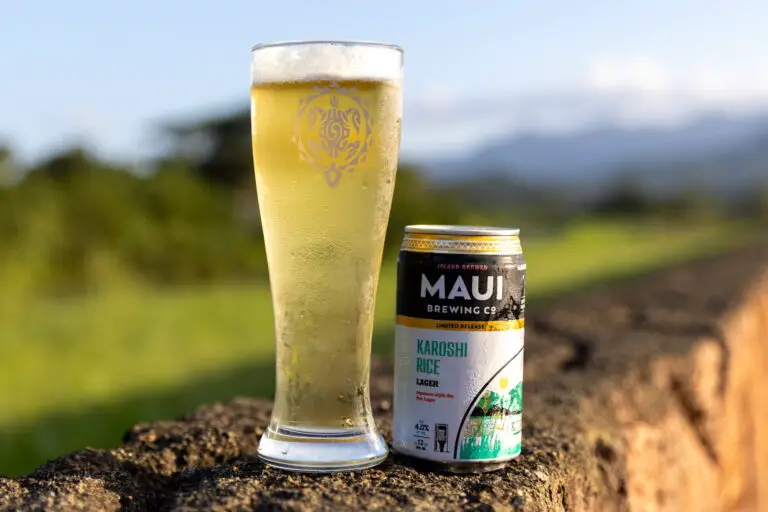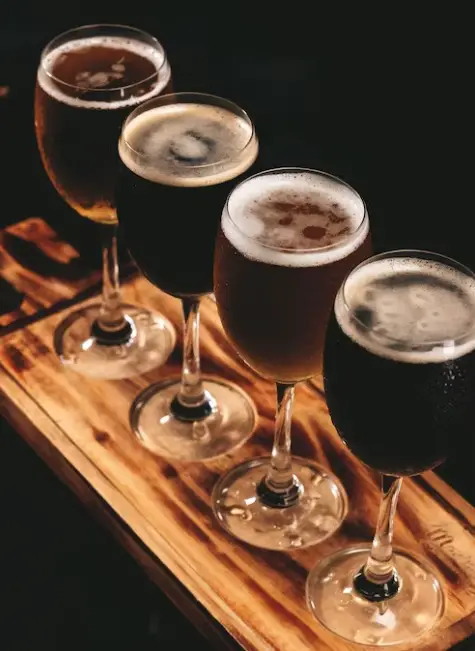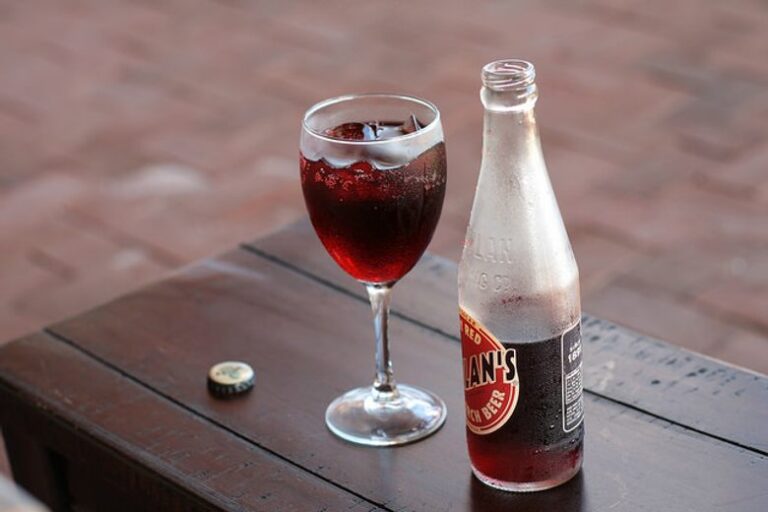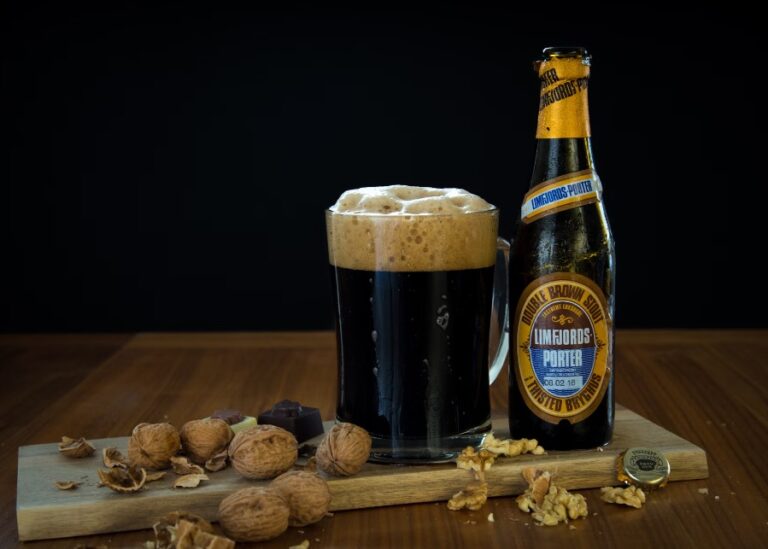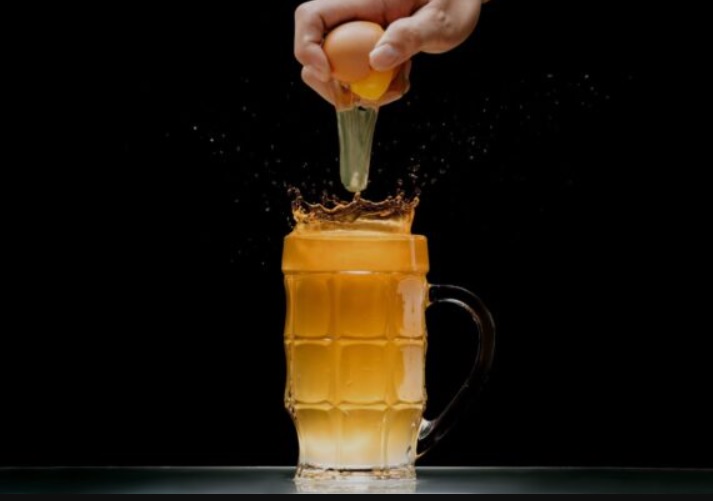What Is Beer On Nitro?
Beer on nitro? Whaaat? What is beer on nitro?
Nitro beer is a unique variation of traditional beer that undergoes a distinctive carbonation process. Unlike standard beers carbonated with carbon dioxide, nitro beers utilize nitrogen for a smoother and creamier texture.
The nitrogen infusion creates smaller bubbles, resulting in a velvety mouthfeel and a visually striking cascade of bubbles when poured. Nitro beers are known for their distinctive characteristics, impacting both the sensory experience and the overall appeal of the beverage.
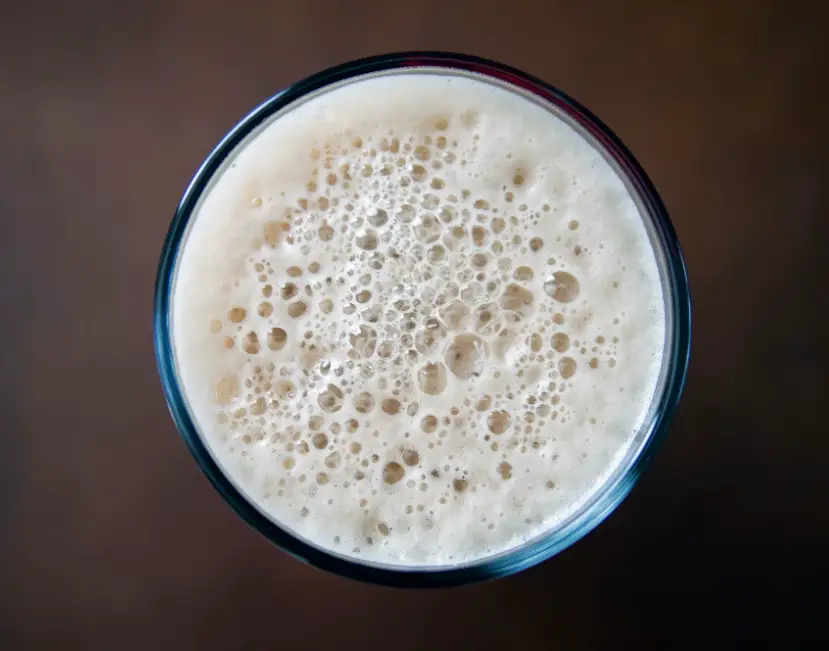
The Background of Nitro Beers
The history of nitro beers traces back to the innovation and experimentation within the brewing industry. Nitrogen infusion in beer originated in Ireland with the iconic stout, Guinness. In the late 1950s, Guinness introduced nitrogen to their beer, a move that significantly transformed the traditional stout experience.
The use of nitrogen was primarily driven by a desire to enhance the beer’s texture and mouthfeel. By substituting carbon dioxide with nitrogen, brewers discovered they could create a smoother and creamier beer with finer bubbles.
This not only improved the sensory experience for consumers but also gave the beer a distinctive visual appeal, characterized by the iconic cascading effect when poured.
Over time, the success of nitro-infused stouts like Guinness sparked interest and experimentation in the broader craft brewing community. Craft breweries began adopting nitro technology, exploring its application across various beer styles beyond stouts.
This experimentation led to the development of a diverse range of nitro beers, each offering a unique take on the nitrogen-infusion process.

Nitro Beers vs. Traditional Beers
1. Carbonation Differences
Nitro beer distinguishes itself from traditional beer through its carbonation method. While conventional beers are carbonated using carbon dioxide, nitro beers employ nitrogen. The use of nitrogen results in smaller and more stable bubbles, creating a smoother and less aggressive effervescence compared to the sharp and tingling carbonation found in traditional beers.
This difference in carbonation not only affects the taste but also contributes to the overall drinking experience.
2. Texture and Mouthfeel
The texture and mouthfeel of nitro beers are perhaps their most distinctive features. Nitrogen, being less soluble than carbon dioxide, imparts a creamier and silkier sensation on the palate. The mouthfeel is often described as velvety or even “milkshake-like,” enhancing the beer’s richness and depth.
This unique characteristic sets nitro beers apart, providing a more luxurious and indulgent drinking experience that appeals to those seeking a departure from the crispness associated with conventional beers.
3. Visual Appearance
Nitro beers showcase a visually captivating presentation when poured. The nitrogen bubbles, being smaller and less buoyant than carbon dioxide bubbles, create a mesmerizing cascade effect. This phenomenon is particularly notable in stouts and other dark beers, where the bubbles seem to flow downward, creating a visually striking and dynamic display.
The visual appeal of nitro beers adds an extra layer of excitement to the overall beer-drinking experience, making them stand out on tap and in the glass.
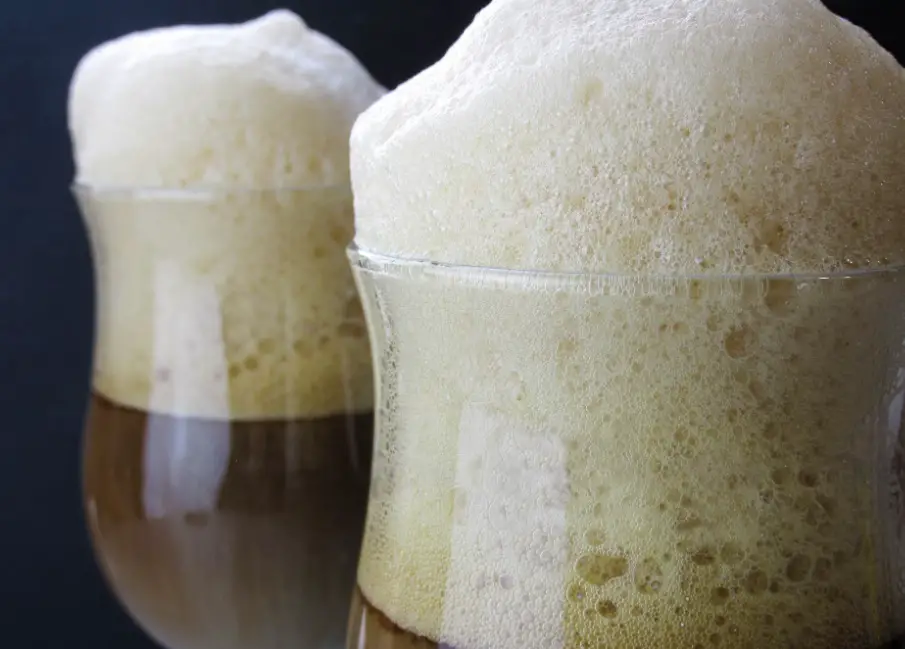
How Much Nitrogen is in Nitro Beer?
The amount of nitrogen in nitro beer varies, but it typically falls within the range of 25% to 30%. This is in contrast to standard beers, which are carbonated with carbon dioxide. The use of nitrogen in nitro beers contributes to the smaller and more stable bubbles that create the distinctive creamy texture and smooth mouthfeel associated with this style of beer.
It’s important to note that the nitrogen is often introduced during the brewing process, either by blending the gas directly into the beer or through a specialized gas mixture.
How is Nitro Beer Brewed?
1. Nitrogen Infusion
The process of infusing nitrogen into beer is a crucial step in creating nitro beers. Brewers introduce nitrogen during the brewing process, either by directly adding it to the beer or by incorporating nitrogen gas into the packaging.
The nitrogen infusion is carefully managed to achieve the desired level of nitrogenation, typically ranging from 25% to 30%. This infusion sets the stage for the unique characteristics of nitro beers, contributing to the creamy mouthfeel and smooth texture that sets them apart from traditionally carbonated beers.
2. Carbonation Techniques
Unlike traditional beers, which rely on carbon dioxide for carbonation, nitro beers employ nitrogen for a distinct carbonation effect. Carbon dioxide is still produced during the fermentation process, but the addition of nitrogen creates smaller and more stable bubbles.
Brewers may use a mix of nitrogen and carbon dioxide or employ specialized nitrogen tanks to achieve the desired carbonation levels. This careful balance of gases is a critical aspect of the brewing process, influencing the sensory profile of the final product.
3. Dispensing Methods
The dispensing method plays a significant role in delivering the nitrogen-infused beer to the consumer in optimal condition. Nitro beers are often served using a nitro tap, which features a restrictor plate or disk that helps control the release of the beer and nitrogen mixture.
This specialized tap is designed to create the iconic cascading effect and ensure a smooth pour, enhancing the overall visual appeal of the beer. Additionally, nitro beers can be packaged in cans or bottles with nitrogen widgets – small capsules that release nitrogen when opened, recreating the on-tap experience at home.
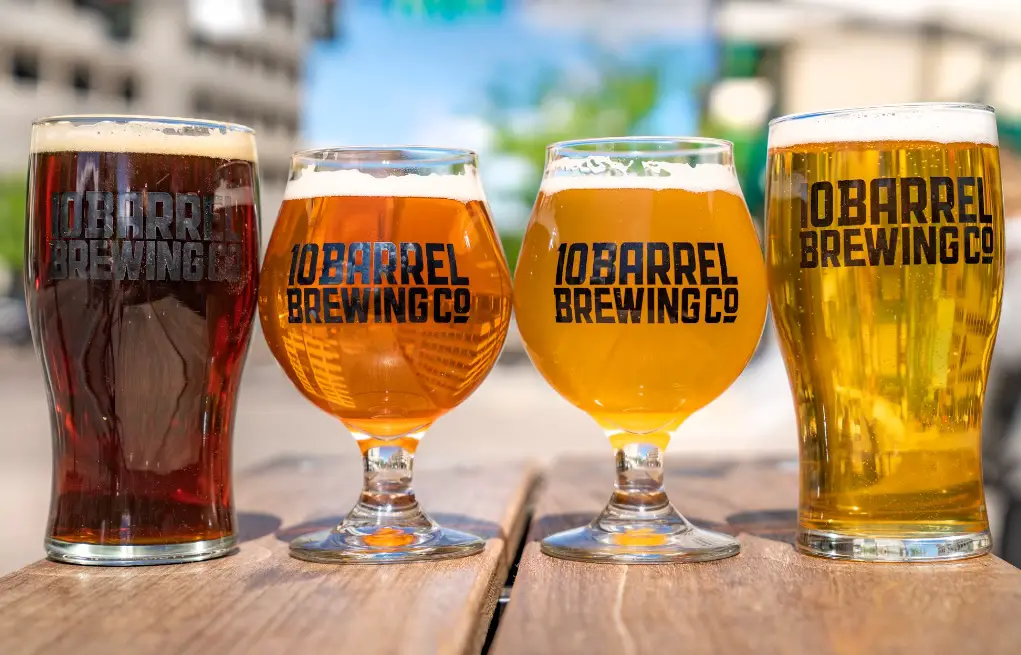
Popular Nitro Beer Styles
1. Stouts
Guinness – The most iconic nitro beer, Guinness, a dry Irish stout, has been synonymous with nitrogen-infused beer since the 1950s. Known for its velvety texture, rich flavor profile, and the famous surge and settle effect when poured, Guinness on nitro has become a global symbol of this unique beer style.
Left Hand Milk Stout Nitro – This American stout from Left Hand Brewing Company is renowned for its smooth and sweet characteristics. The addition of lactose contributes to a creamy mouthfeel, making it a popular choice among nitro beer enthusiasts.
Samuel Adams Nitro White Ale – Departing from the traditional dark stouts, this nitro offering from Samuel Adams is a Belgian-style white ale. With its hazy appearance and citrusy notes, it showcases the versatility of nitrogen infusion across different beer styles.
2. Other Nitro Beers
Nitro IPAs – Craft breweries have explored nitrogen infusion in India Pale Ales (IPAs), typically known for their hop-forward and effervescent profiles. Nitrogen can impart a unique smoothness to IPAs, and variations like the Nitro IPA from Oskar Blues Brewery exemplify this experimentation.
Nitro Coffee Stouts – Blurring the lines between beer and coffee, some breweries have embraced nitrogen infusion in coffee stouts. Beers like the Founders Brewing Co.’s Breakfast Stout with Nitro showcase the marriage of roasted malt flavors and the smoothness associated with nitro beers.
Nitro Cream Ales – Lighter beer styles like cream ales have also embraced nitrogen infusion. These beers, such as Firestone Walker’s Nitro Merlin Milk Stout, offer a refreshing and creamy alternative to traditional carbonated cream ales.

How Is Nitro Beer Served? Serving Nitro Beers Explained
Tap System: Nitro beers are often served through a draft system with a specific nitro faucet. This faucet has a restrictor plate that helps control the nitrogen flow, allowing for the characteristic cascading effect and creamy head.
Cascading Effect: One of the distinctive features of nitro beer is the cascading effect when it is poured. The nitrogen bubbles rise through the beer, creating a mesmerizing visual display as the beer settles and forms a dense, creamy head.
Pouring Technique: When pouring nitro beer, it’s crucial to use the right technique. The beer should be poured hard down the side of the glass to encourage the nitrogen bubbles to rise and create the cascading effect. This method also helps achieve the desired creamy head.
Glassware: Nitro beers are typically served in specific glassware designed to enhance the visual and aromatic experience. The shape of the glass can influence the formation of the creamy head and the overall presentation of the beer.
Serving Temperature: Nitro beers are best served at slightly higher temperatures than some other beer styles. The flavors and aromas are more pronounced when the beer is not overly cold, allowing the drinker to fully appreciate the nuances of the brew.

Wrapping It Up
In summary, nitro beer is a unique variation that introduces a smooth and creamy texture to traditional beer. Its nitrogen infusion creates a visually appealing cascading effect and a distinctive head.
When serving, focus on proper pouring, use specific glassware, and consider a slightly higher temperature for optimal enjoyment. Nitro beer adds a delightful twist to your drinking experience, offering a memorable and flavorful alternative in the world of craft beer.

I am a young architect with a passion that goes beyond blueprints… it’s beer! undertherosebrewing.com is more than just a blog, it’s a manifestation of my lifelong dream to explore, read, and learn everything about beer. Join the blog on this unfiltered and genuine adventure into the heart of beer culture. Cheers!

